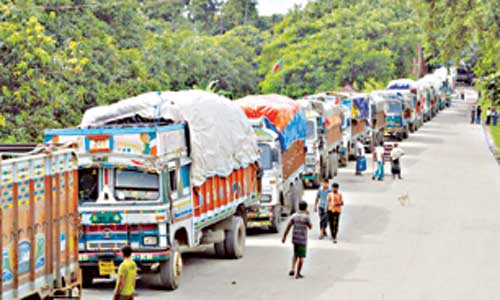Customs duty structure to be in consistent with trading partners.
The government is going to revise the existing customs duty structure to make it up-to-date and consistent with the duty structure of other trading partner countries, officials of the commerce ministry said. They said that Bangladesh Tariff Commission had already started to review the structure following the instruction of the ministry. Commerce ministry took the initiative as part of implementing the decision of a cabinet meeting. Currently, there is a five-tier customs duty structure in the country beginning from zero to the highest 25 per cent while in India there are 22 slabs in customs duty structure ranging from zero per cent to 150 per cent and 6 slabs in Sri Lanka starting from zero per cent to 100 per cent. Initially, the BTC will recommend the government for increasing the number of slabs in duty structure splitting it into more than five-tiers, officials involved with the review process told New Age recently.
It may also recommend increasing the highest rate of customs duty from the existing 25 per cent to cope with the situation to be evolved in future after removal of supplementary duty, they said. In Bangladesh, importers enjoy duty exemption for most of the capital machineries and basic raw materials while pay 2 per cent import duty for some other capital machinery, 5 per cent for other basic raw materials, 10 per cent for intermediate raw materials and semi-finished products and 25 per cent for finished or luxury products. In addition to customs duty, there are 12 slabs of supplementary duty ranging from 10 per cent to the highest 500 per cent for different products including luxury items and five per cent regulatory duty, value-added tax, advance trade VAT and advance income tax in import of various products. Besides customs duty, India imposes counter-veiling duty, central excise duty, customs cess and special customs duty on import of products. In many other countries, the number of slabs in customs duty structure is more than that of Bangladesh, according to a preliminary report of the tariff commission. Officials of the National Board of Revenue said that as a consequence of rationalisation of duty structure under ongoing trade liberalisation regime, the government will gradually have to remove the supplementary duty in future.
After implementation of the new Value-Added Tax and Supplementary Duty Act-2012 in July, 2016, supplementary duty on most of the products would go at import stage. According to NBR, the list of products for imposing supplementary duty would be reduced to only 170 from existing 1,362 products. The revenue board collects customs duty classifying the imported items in 6,558 descriptions as capital machinery, basic raw materials, intermediate goods and finished items under harmonized system code. BTC chairman Md Azizur Rahman told New Age that the commission started working on the issue following the instruction of the commerce ministry. ‘We will give a report with a set of recommendations to the ministry soon,’ he said. Tariff commission officials said that Bangladesh manufacturers would have to face severe uneven competition in future after removal of supplementary duty if the rates of customs duty are not revised. According to the BTC report, agricultural and industrial products get more protection in India than that of in Bangladesh. Tariff commission opined that the customs duty slabs initially can be set at seven slabs at 0, 2, 5, 7, 10, 15 and 25 per cent from the existing five slabs at 0, 2, 5, 10 and 25 per cent, according to the BTC report. The two new slabs at 7 per cent can be set in import of basic raw materials which is locally available and 15 per cent for intermediate products which are not produced in the country, the report said.
- See more at: http://newagebd.net/106986/customs-duty-structure-to-be-in-consistent-with-trading-partners/#sthash.AnzRaekO.dpuf











